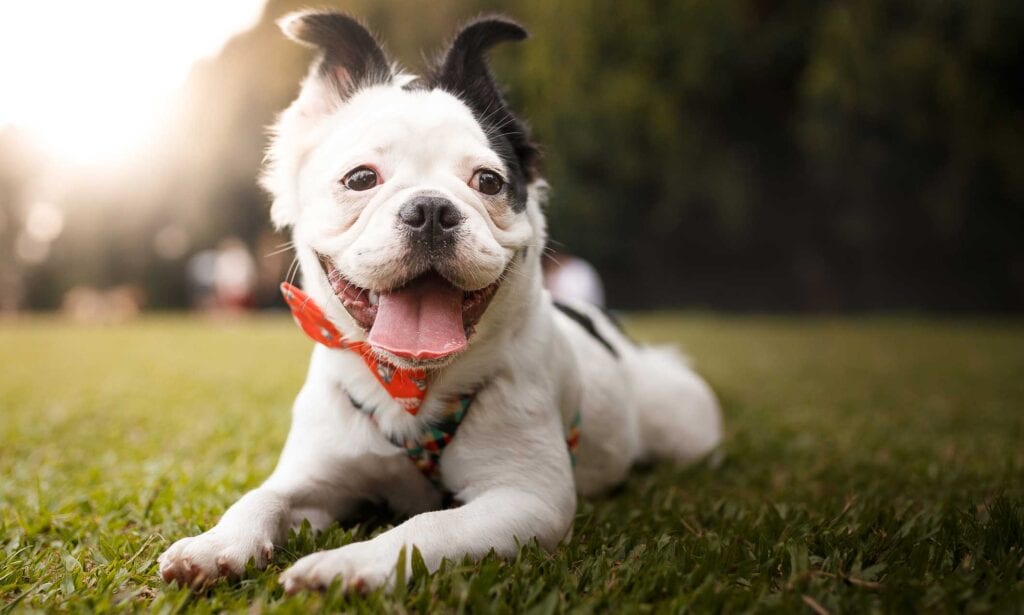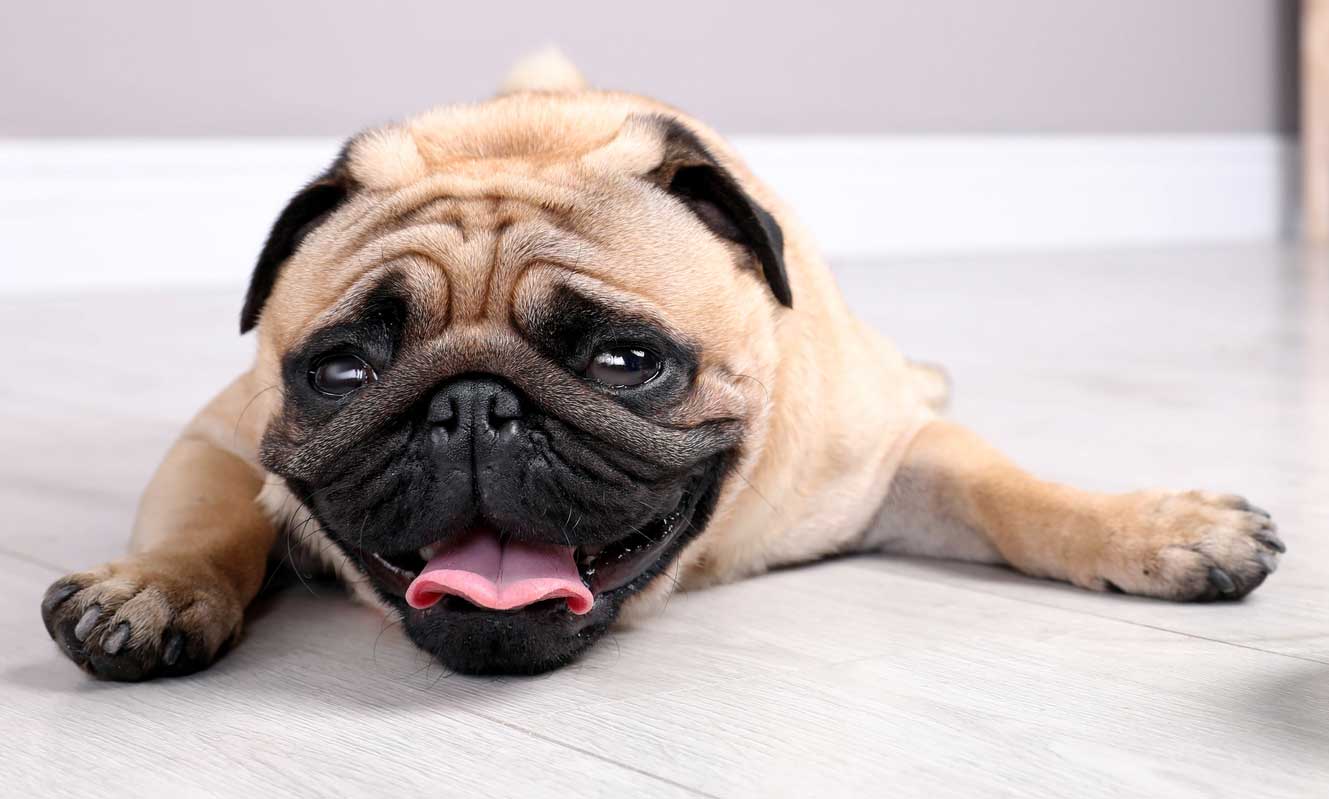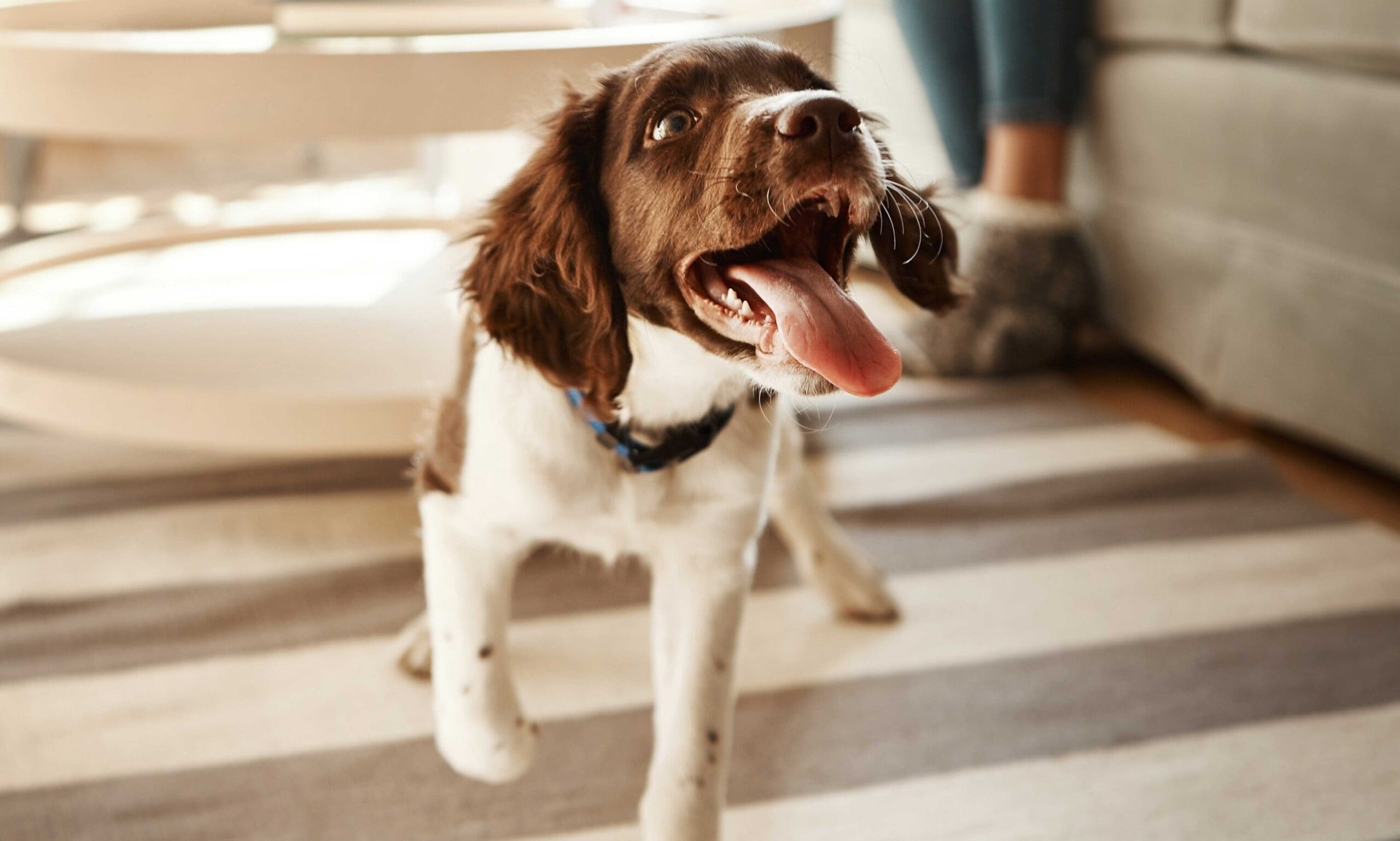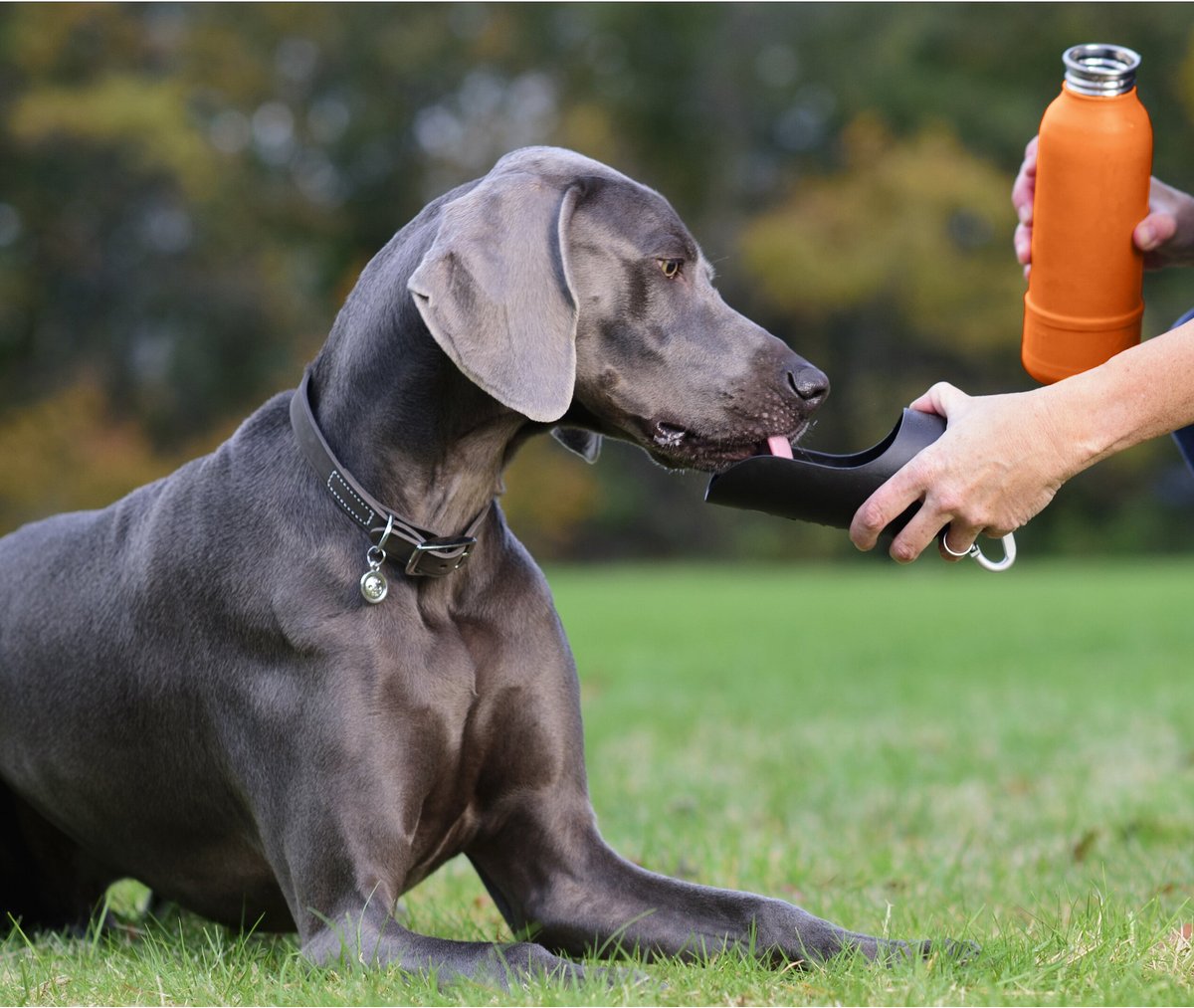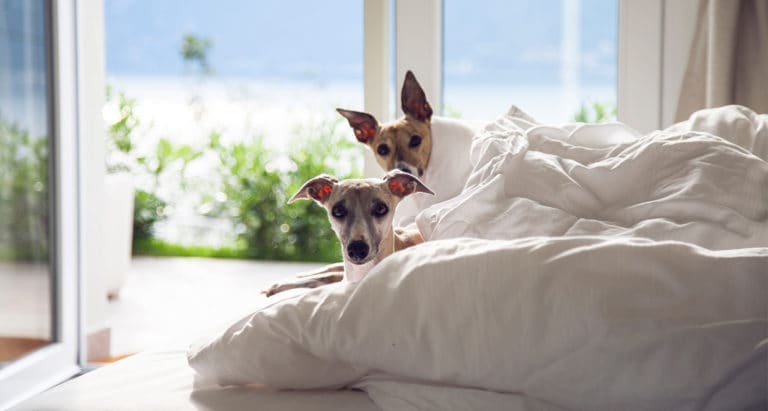On an especially hot day, you may be walking your dog with beads of sweat dripping from your forehead, wondering "do dogs sweat, too?" as you look enviously at your pup's dry coat. While dogs do sweat, the way dogs sweat is different from humans.
Sweat plays a small role in helping dogs maintain their ideal body temperature (which is about 99.5 to 102.5 degrees Fahrenheit), but it’s not the primary mechanism by which they stay cool—it’s more of a way to communicate with other pups. Interesting, right?
We talked to two vet experts to get the scoop on how (and why) dogs sweat, how dogs cool themselves down and what you can do to keep your own pup cool this summer.
Click to jump to each section:
And while both types of sweat glands produce sweat, it’s in very small amounts. It does contribute to cooling to some degree but not in the same way that sweating cools humans down.
Apocrine sweat glands
The apocrine sweat glands don’t cool dogs’ bodies, but they’re the major type of sweat gland in dogs and serve another purpose, according to Dr. Ann Hohenhaus, DVM, senior veterinarian and director of pet health information at the Animal Medical Center in New York.
"The primary function of the apocrine glands is to release hormones (pheromones) that give chemical signals to other dogs instead of releasing moisture that helps send away heat from the body," says Dr. Patrick Mahaney, VMD, and owner of Pet Acupuncture and Wellness in Los Angeles, California. Each hair follicle on your dog has its own apocrine gland, so your dog is covered in them.
The sweat apocrine glands produce is oily but odorless "until it mixes with the resident bacteria of the skin, giving sweat its smell," notes Dr. Hohenhaus.
Merocrine sweat glands
The merocrine sweat glands are the major type of human sweat glands, but dogs have them, too. Merocrine glands produce sweat, which is predominantly a mixture of sodium chloride and water.
"Areas of skin where there is little to no hair such as the paw pads and nose have the ability to release moisture in the form of sweat via merocrine glands, which start to noticeably function when the body heats up," says Dr. Mahaney.
Because merocrine sweat glands are located in a dog’s paw pads, you may notice wet paw prints when your dog is sweating.
"To regulate body temperature, humans sweat, and the evaporation of the water helps keep body temperature low. Since dogs don’t sweat in that way, they use the evaporation of saliva from panting as a method of cooling," Dr. Hohenhaus says.
Dogs also rely on vasodilation—or widening of the blood vessels—to cool them off in hot weather. When your dog is feeling hot, their blood vessels will automatically expand, which brings blood closer to the surface of the skin. This allows the hot blood to cool down a bit before moving back to the heart.
What Are the Signs of Excessive Sweating in Dogs?
Just like humans, dogs can sweat more than usual when they’re feeling stressed.
There aren’t a lot of signs, but usually this excessive sweat comes out through the paws, so you may notice wet paw prints, or the paw pads may feel wet to the touch.
How do I treat excessive sweating?
Typically, excessive sweating will clear up when your dog cools or calms down (if stress-related).
You can help speed up the process by removing your dog from the source of stress (if possible) and taking steps to calm them down.
This may mean petting them gently, playing calming music and/or offering them a treat or toy that can divert their attention.
“Dogs do not have the same capacity to sweat like humans, therefore they cannot evacuate heat as efficiently from the skin surface and are prone to overheating and developing hyperthermia, an elevated body temperature,” Dr. Mahaney says.
If your dog can’t effectively cool themselves down, it can lead to overheating and/or heatstroke.
What are the signs of overheating? And how do you treat overheating?
Some signs of overheating include:
- Excessive panting
- Drooling
- Rapid heartbeat
- Rapid breathing
If you notice these signs in your dog, take action right away.
To treat overheating:
- Bring your dog to a cool area. You may be able to find some reprieve in a shady area, but if it’s a hot summer day, you may want to seek shelter inside an air-conditioned space.
- Give your dog some cool water.
- Spritz some cold water on your dog’s coat.
- Place your dog in front of a fan.
What are the signs of heatstroke? And how do you treat heatstroke?
If you don’t take steps to mitigate overheating, it can lead to heatstroke, which is the most severe form of heat exhaustion.
Heatstroke occurs when a dog’s body temperature gets so high that they can no longer cool themselves down through panting and vasodilation.
Some of the most common signs of heatstroke in dogs include:
- Heavy panting
- Difficulty breathing
- Excessive drooling
- Lethargy
- Uncoordinated movements
- Vomiting
- Dry, sticky gums
- Bright red gums and/or tongue
- Increased heart rate
- Seizures
- Loss of consciousness
Heatstroke is a medical emergency. If your dog is exhibiting the above signs, head to an emergency vet as soon as possible. While you’re on your way, you can pour cool (not cold) water on your dog and give them a small amount of cool water to drink. It’s also important to bring them to a cooler location.
Here are some things you can do to keep your dog cool:
- Avoid playing outside on a really hot day. If you have no choice but to be outside, try to lower the temperature as best you can. The XPOWER Multipurpose Oscillating Fan is a good option that cools and mists.
- Make sure your dog always has access to cool water. The KONG H20 K9 Unit Insulated Stainless Steel Water Bottle is a great way to ensure you always have fresh water on hand.
- Take breaks. If you notice your dog panting, take a break.
- Exercise your dog early in the morning or later in the evening—if you know it’s going to be a hot day, you can get a walk or playtime in before the temperature rises or after the sun goes down.
- Wrap your dog in a cooling vest, like the Canada Pooch Cooling Dog Vest, to help them stay cool and refreshed.
Keep in mind that brachycephalic breeds, like Pugs, French Bulldogs, Bulldogs, Shih Tzus, Boston Terriers and Boxers, are more prone to overheating and heat exhaustion than other types of dogs. Be especially careful when playing outside with these breeds.
More on keeping your dog cool this summer:
Share:
